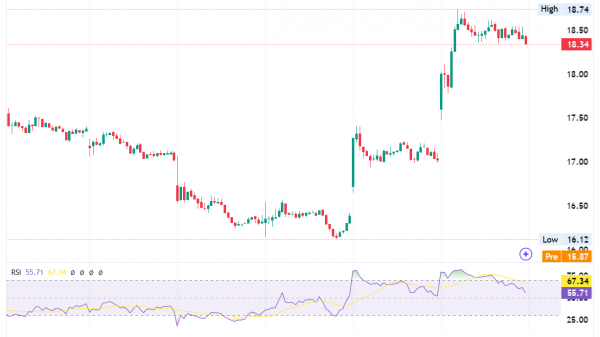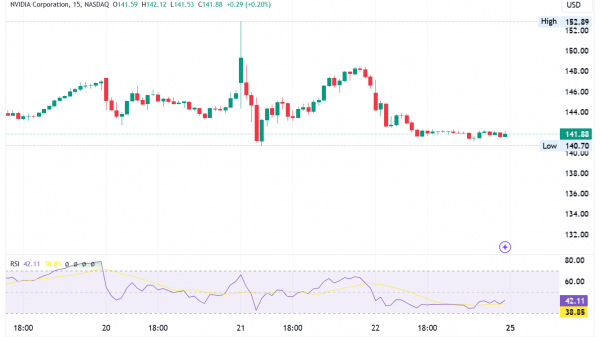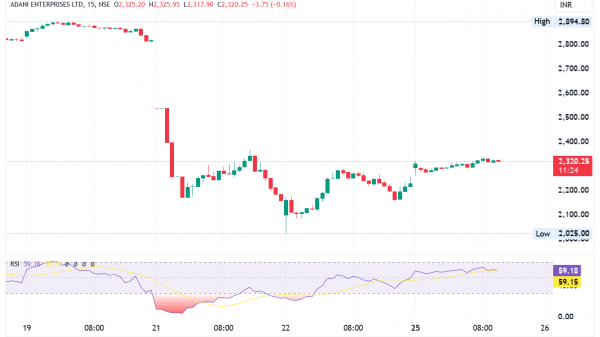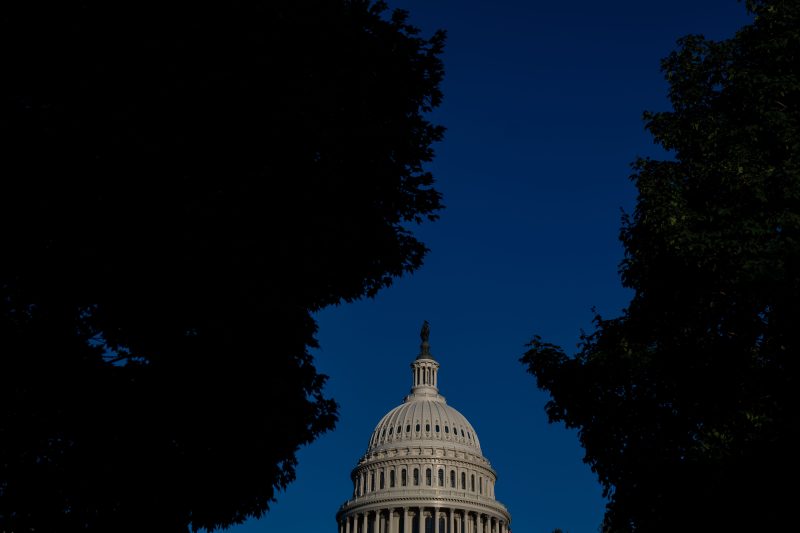When it comes to this fall’s battle for control of Congress, the House and Senate might as well be on different planets.
The House majority, with Republicans clinging to a margin of just a few seats, will most likely get determined by a couple dozen seats in blue-leaning states like New York, New Jersey and California where President Biden will win by comfortable margins, with little effort by ex-president Donald Trump’s team to compete there.
In the Senate, where Democrats cling to an equally perilous 51-49 edge, the majority is almost certain to be determined in three deep-red states — Montana, Ohio and West Virginia — where Trump will likely romp to victory.
These fault lines have offered Democrats much more room for offense in House races and Republicans bigger opportunities for gains in the Senate, which could produce a truly confounding, unprecedented outcome.
Voters might flip the majorities in both the House and Senate, but in opposite partisan directions.
This asymmetrical political balance is a relatively new phenomenon. Historically, political tides have regularly moved in the same direction so that the same party that makes gains in the House will also gain seats in the Senate, or at least hold even depending on the races’ competitiveness.
Yet in 2018, 2020 and again in 2022, the same party that captured seats in the fall elections for the House lost seats in the Senate — something that had only happened four times in the previous 36 congressional elections. And this November stands a decent chance of that split verdict a fourth straight election.
As a young election analyst and editor at Hotline 20 years ago, Chuck Todd used to cite a theory that the House majority flipping would also bring that party control of the Senate — or a bigger majority if it already held it — because the political undertow would force it that way.
“Because that’s how things worked since the election of senators,” Todd, who went on to host “Meet the Press” and is now NBC’s chief political analyst, recalled.
Indeed, in the 60-year period after the end of World War II, the House majority changed hands six times. And in each of those six elections the same party also won the Senate majority, most recently in 2006 when Democrats won more than 30 House seats and six Senate seats.
In the 110-year history of the direct election of senators, the American electorate has never flipped majorities in both chambers going in opposite directions. Now, as lawmakers and campaign advisers look to the looming November elections, that norm could easily be turned upside down.
The Cook Political Report With Amy Walter rates 22 House races as pure toss-ups, and Inside Elections with Nathan L. Gonzales rates 28 races as toss-ups or very narrowly tilting in one direction.
Combined, those two reports rate 29 seats as the most competitive. Just eight of them are in districts that favored Trump in the 2020 race, with six of those giving him a narrow margin of four percentage points or less.
Meanwhile, there are a dozen toss-up seats — eight held by Republicans — in which Biden won by five percentage points or more. Democrats are thus better positioned to pick up more competitive House seats than Republicans are.
In the Senate, a handful of races fall directly in the presidential battleground (Pennsylvania, Michigan, Wisconsin, Nevada and Arizona) but the real dividing line is almost certain to occur in Trump country. That means Republicans have the edge in winning most of these contests.
Democrats have all but given up on West Virginia, with Sen. Joe Manchin III (D) retiring and the popular governor, Jim Justice (R), running in a state that Trump won by an average of 40 points the previous two elections.
And Sens. Sherrod Brown (D-Ohio) and Jon Tester (D-Mont.) are facing tough elections in states that Trump won by, respectively, an average of 8 and 18 percentage points. Any hope Democrats have of holding the Senate majority certainly begins with defending both of those.
So, given the shrinking number of voters who split their tickets between parties, Biden could help flip the House to Democrats just by performing close to how he did in 2020 — and Trump could aid in flipping the Senate to Republicans just by essentially matching his losing effort four years ago. This should be true no matter which one of them is elected president.
This type of scenario was unimaginable for more than a century, but Walter, the editor in chief of the Cook Report, views this crosscurrent trend as part of the drift into a political system where campaigns get predetermined by the relative rural-urban breakdown in a particular state or district.
“In a country that is more calcified in its blue/red divide, it makes a lot of sense that House and Senate majorities can go in different directions in the same year. The Tip O’Neill ‘all politics is local’ adage is now ‘all politics is national AND regional,’” she wrote in an email.
That refers to the last House speaker from Boston, whose reign from 1977 through 1986 saw Democratic majorities remain strong despite two landslide presidential victories by Ronald Reagan. Still, in the 1980 and 1984 elections, the House GOP did make double-digit gains each time to cut into O’Neill’s margin.
That 1984 election was one of the rare times when the verdicts went separate ways. Democrats gained a couple of seats in the Senate but Republicans held the majority, and the House GOP gained ground, but not the majority.
Today’s congressional politics has come to resemble a bit of trench warfare, with each side battling for small gains that can briefly give it control of one or both chambers.
If Democrats win the House it would mark the third time in four elections — 2018, 2022 and 2024 — that the majority changed hands.
Only two other periods, since the nation settled into a two-party system of Republicans and Democrats in the 1850s, have seen such political instability.
In the post-Reconstruction period, as the parties settled into regional blocs, the House majority flipped five times in eight elections from 1880 through 1894. And just after the close of World War II, as both parties began to evolve in terms of their base voters, the House flipped its majority in 1946, 1948, 1952 and 1954.
Today’s political climate has been sorted into a geographical division in which rural, working-class regions fall heavily toward Trump and almost reflexively elect a Republican to the House. Urban districts are almost exclusively for Democrats and provide huge chunks of Biden’s support.
That leaves hand-to-hand combat for the suburban districts. Those have drifted far away from Trump and provided the edge for the Democratic majority in 2018. But then enough of those voters became disillusioned enough with Biden to help Republicans narrowly win the 2022 House majority.
But that 2018 blue-wave energy could not overcome the sharp rightward lean in Indiana, Missouri and North Dakota, where Republicans defeated incumbent Senate Democrats en route to a two-seat pickup in those midterms.
Despite House Republicans gaining more than 20 seats combined in 2020 and 2022, the collection of Senate seats up for grabs fell toward states that favored Biden. That led to Democrats netting three Senate seats and the majority in 2020, then gaining a seat in 2022.
Todd noted this particular 2024 class of Senate seats has a nearly 30-year run of unusual results that sometimes resulted in quirky outcomes, starting in 1994 when Republicans gained eight seats and won the majority. Six years later, Democrats won four seats in that same class and tied the Senate at 50-50.
Then the 2006 midterms, in a rejection of the Iraq War, saw Democrats winning six seats, including those in deep-red places like Montana.
Some subpar GOP candidates in 2012 and 2018 allowed Democrats like Brown, Manchin and Tester to keep winning despite the big margins for Trump in their states.
Now, Brown and Tester will be out battling to each win a fourth term, and to save the majority for their Democrats, in a sort of political no man’s land, as the presidential field flies over their states.
In the House, of those nearly 30 closest races, only seven are being contested in states that both Biden and Trump are fighting to win. Two more seats, one in Nebraska and one in Maine, might receive presidential attention because their states award electoral votes on performance in House districts. That means if the Biden-Trump race is as close as it appears, a single electoral vote could matter.
But, overall, the House majority will get mostly decided in races with little overlap from the presidential contest, the same way as the Senate, because political geography increasingly determines the outcome.
“Politics is now more stable than ever and more volatile at the same time,” Walter said.


































